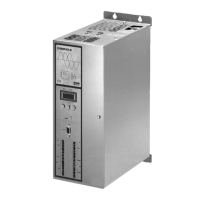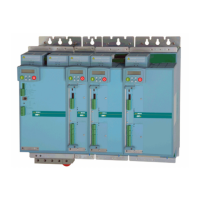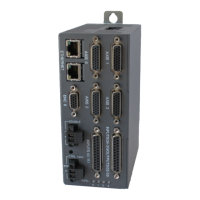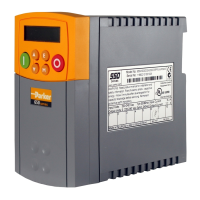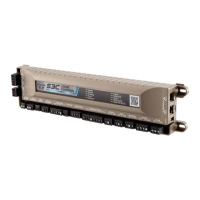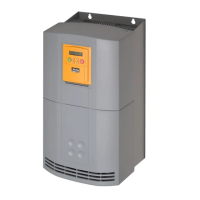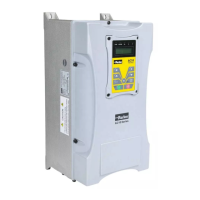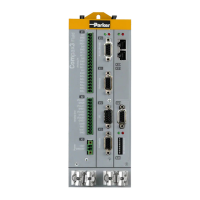Parker Hannifin S.p.A. - S.B.C. Division HPD N User’s Manual
82
The message structure is:
[STX] [CMD+ADDR] [LUN] [PAR] [D0] ... [Dn] [CHK]
where:
[STX] = $7E transmission start indicator. If a field other than STX should assume the value
$7E in the message, this field is followed by a ($00) to ensure that it cannot be interpreted as
an [STX].
[CMD+ADDR] = command and address of peripheral device, always different to zero. This
datum is composed as follows: the first 5 bits (from 0 to 4) define the drive address (from 0 to
31); the remaining 3 bits (from 5 to 7) define the type of message, as described in the
following table:
[LUN] = total number of bytes transmitted (parameter or PLC instruction); can assume values
from 1 to 4. This value must not hold zero characters ($00) after values that coincide with the
initial transmission character ($7E).
[PAR] = parameter or PLC instruction read/write address
[D0] ... [Dn] = datum transmitted.
[CHK] = 256 modulus sum of all fields except [STX] (checksum).
Message types
[CMD1] = drive response to data request, format:
[STX] [001+ADDR] [LUN] [PAR] [D0] ... [Dn] [CHK]
or confirm message in response to data entry or update, format:
[STX] [001+ADDR]
where ADDR identifies the answering drive.
[CMD2] = read message of PLC area instruction; format:
[STX] [010+ADDR] [LUN] [PAR] [CHK]
[CMD3] = write message of PLC area instruction; format:
[STX] [011+ADDR] [LUN] [PAR] [D0] ... [Dn] [CHK]
CMD bit 7 bit 6 bit 5 message type
1 0 0 1 drive response
2 0 1 0 read PLC instruction
3 0 1 1 write PLC instruction
4 1 0 0 read parameter
5 1 0 1 write parameter
6 1 1 0 bit change
7 1 1 1 broadcast parameters to all drives

